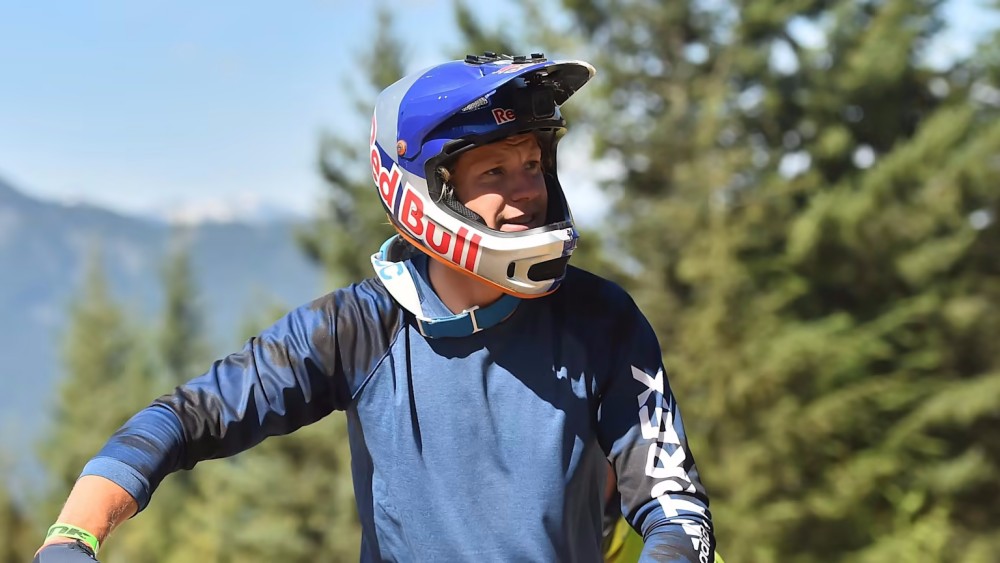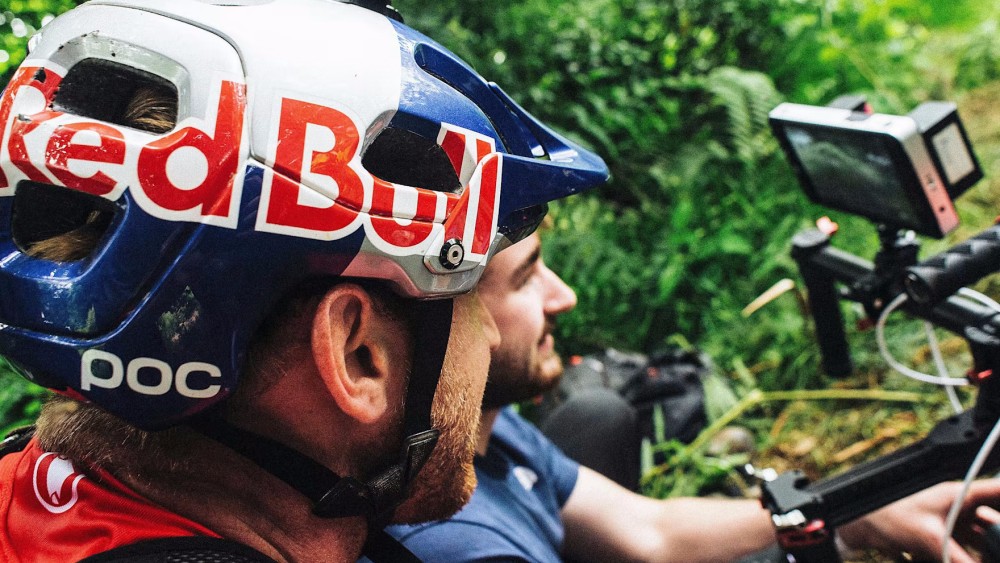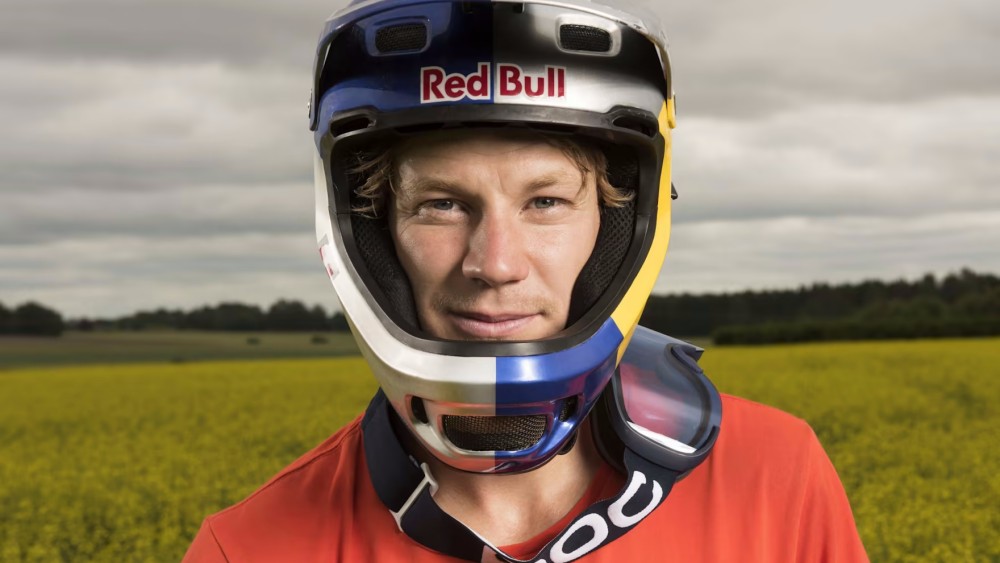Everything you need to know about mountain bike helmets
What makes a mountain bike helmet safe, who certifies it and, of course, is it a write-off if you drop it?
Mountain bikers almost always understand the need for a good helmet – whether it’s a low-hanging branch across a trail or a big crash, common sense tells us that a decent helmet is a must.
But who declares a helmet to be suitably safe before it is put on the market, what certifications exist, what factors are taken into account when certifying them, and – the age-old question – does affixing a helmet make it unsafe?
How important is fit? What defines a good fit?

A helmet should remain in place whenever it is used or under load. A helmet won’t protect you if part of your head is exposed when you land. Finding the right size helmet is crucial, as a helmet that is too small won’t land on your head and cover it correctly, while a helmet that is too large may move too much on your head. A properly fitted helmet will stay on your head without creating any pressure points.
What European safety approvals (CE) are available for MTB helmets?
EN1078 is the only mandatory European standard that covers all bicycle helmets.ASTM F1952-15 is an American standard, but is relevant to the cycling standard for speed helmets.NTA8776 is the new Dutch standard for speed e-bikes and e-bikes.
There are a number of different testing organisations and notified bodies that offer and support helmet testing and certification according to European and US standards etc.
What is involved in safety testing?
This is a fairly detailed picture. the EN1078 test involves impact testing of eight different head shapes, sized according to the size range of the helmet, and using different anvils (EN1078 for flat and curb shapes). This involves hot (+50°C for 4-6 hours), cold (-20°C for 4-6 hours) and wet conditioning and artificial ageing (spraying ambient warm water at a rate of 1 litre per minute for 4-6 hours and UV irradiation with a 125W xenon lamp) filled with a quartz lamp at 250mm for 48 hours).
In addition, a roll-off test and a holding power test are carried out to ensure that the helmet does not slip off the head easily and that straps, buckles etc. do not fail under load. The materials (pads, straps etc.) are also tested for harmful substances (azo dye analysis) and tested for colour fastness to perspiration.
What is spinning? Should we all have it?
Helmets are certified to protect users from linear impacts, but falls often result in angled or tilted impacts. These can cause the helmet and head to rotate. Rotational impact protection is necessary because the force required to cause a head injury from an angled impact is usually lower. Driven by our mission and by working closely with medical experts at POC Labs, we know that tilt impacts are common and can result in serious head injuries due to helmet and head rotation.
In response to tilt impacts, we created SPIN Pads, which are optimised to provide rotational impact protection based on precise positioning within the helmet. SPIN Pads provide a new layer of protection by using a variety of padding technologies that shear in any direction during a tilt drop. SPIN Pads allow the helmet to move relative to the head, which reduces the forces transmitted to the user’s head and brain in the event of a tilt impact. brain in the event of a tilt impact.
[RB Note: MIPS is a similar system to POC’s SPIN; it can be found in helmets from other manufacturers – look for the MIPS brand].
Are mountain bike helmet peaks dangerous? Should they be easier to disengage, as is now mandatory in some motorbike races?
We have found that smooth shells test better in tilt impacts, which is why we designed full helmets with detachable goggle/cap peaks.
Do helmet-mounted cameras compromise safety?
If the camera mount does not come off easily, it is likely to add rotational forces to the head on impact. This is certainly not good, and we would advise against adding something to your helmet that would interfere with gliding and potentially snag objects on the ground.

There is not a great deal of evidence to support or refute this. But as you might imagine, it really depends on the type of sticker. Polycarbonate (PC) is a sensitive material, so stickers containing certain chemicals can have negative effects. This is why consumers should not paint PC cases and, as a rule of thumb, we recommend avoiding any kind of additional treatment on the case.
Should we replace our helmets after a minor or severe head impact? What if I drop my helmet?
There are no rules as to what constitutes a minor or major fall and the effects of a fall will be different for each individual. Therefore, it is not possible to provide a simple answer. However, much depends on the type of helmet you are using.EPP lined helmets are designed for multiple impacts and can naturally withstand repetitive impacts, unlike single impact EPS, but even EPPs have limitations and it’s important to check your helmet regularly for signs of wear and tear.
It happens to all of us and shouldn’t be a reason to replace your helmet, but if you do it regularly and don’t look after your helmet then you may need to replace it sooner than you would like to to. A simple rule is to look after it properly.
Do full face chin guards meet safety ratings?
There is a test for chin guards in the ASTM F1952-15 standard. It is a pass or fail test.
Do all full-face covers have to pass the ASTM F1952 – 15 test?
No, this is not a mandatory certification. There are some full face helmets on the market that are not ASTM F1952 certified.
Do helmets that have not been hit have the longest life span?
Helmets are essential pieces of equipment and can provide years of excellent service if properly cared for, but it’s fair to say that at the end of a day’s riding, helmets are usually thrown in a bag or the back of a car and have to manage a fair amount of daily wear and tear. As a general rule, we recommend that you replace your helmet every three years.
How important is overall head coverage? Is this a safety test? Or does the CE marking only test for impact on foam, regardless of the shape/size of the helmet?
Since the maximum G-value allowed in an impact is less than 250 grams, a helmet that registers a minimum coverage of 249 grams per impact can still pass the required test, as can a helmet with extended coverage and a value of less than 50 grams.
We have found that many real-world impacts end up in the lower part of the helmet, which is why we have designed and extended the coverage around the head, especially the rear. This was our own choice, as we wanted to create what we felt was a safer helmet. From a testing point of view, we are of course welcome to test on the underside of the head mould to take into account these impacts and scenarios.
What materials are used in the helmets? Is there a way to define one as “better” than the other in terms of safety?
Most bike helmets are made around an EPS core (liner) and a PC (polycarbonate) shell. Some have an ABS, carbon fibre or fibreglass (hard) shell rather than the thinner PC shell.

EPS and PC offer very good protection and are often very light. However, EPS is built with single-impact protection in mind and therefore does not offer multi-impact protection characteristics. Adding a hard shell to a helmet will make it more durable, but the EPS core is designed to permanently deform after a fall, so it won’t provide adequate protection the second time you fall.
That’s why we use EPP cores and hard shells on most of our DH and enduro helmets. Because EPP is flexible, it doesn’t permanently compress on impact, so it returns to its original shape, meaning you can continue to use your helmet after one or more lighter falls.
The liner and shell are the main parts of the helmet, but other materials such as aramid and carbon add different elements and safety features to the helmet.
Where can people find the safety ratings for helmets? Where is it written?
The certification should be listed on the inside of the helmet, but you can usually find it on the size label on the shell or on the box label in shops.
If you want to know more about electric bikes or have any questions about our bike helmet and their components, please feel free to reach out to our customer service. We are always here to assist you.

